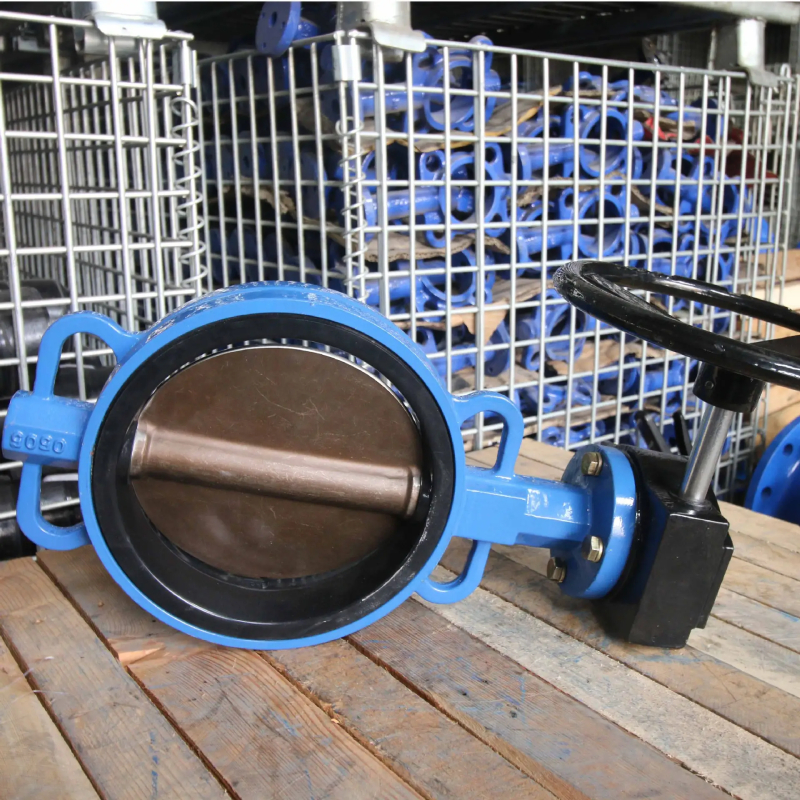ನವೆಂ . 10, 2024 11:07 Back to list
300mm Industrial Gate Valve Specifications and Applications in Various Systems
Understanding the 300mm Gate Valve Design, Function, and Applications
In the world of industrial piping systems, valves play a crucial role in controlling the flow of fluids. Among the various types of valves available, the gate valve stands out for its functionality and reliability, especially in large diameter applications. One commonly used size is the 300mm gate valve, which has important applications across many industries.
What is a Gate Valve?
A gate valve is a type of valve that opens and closes by raising or lowering a gate (or wedge) within the valve body. This design allows for minimal resistance to flow when the valve is fully open, making it particularly efficient for applications where a straight line of flow and low friction loss are desired. Gate valves are designed for on/off control rather than throttling, which means they are ideal for applications where flow regulation is not required.
The Design of 300mm Gate Valves
The 300mm gate valve, with a nominal diameter of 300 millimeters, typically consists of the following components
1. Body The main part of the valve that houses all other components. It is often made from materials like cast iron, ductile iron, or stainless steel, depending on the specific application and the fluids being transported.
2. Gate This is the obstruction used to control flow. In a gate valve, it is usually a flat disc that can move up and down to either allow or block fluid flow.
3. Bonnet Attached to the body, the bonnet provides access to the internal components for maintenance and repair.
4. Stem The stem connects the handwheel (or actuator) to the gate and transfers rotational motion to vertical motion to open or close the gate.
5. Seals These are crucial for preventing leaks and are typically made from rubber or other durable sealing materials.
300mm gate valve

The design is specifically optimized for durability and functionality, ensuring that the valve can withstand high-pressure conditions while maintaining a tight seal when closed.
Functionality and Operation
The operation of a 300mm gate valve involves turning a handwheel or using an actuator to rotate the stem. When the wheel is turned, the stem moves the gate up or down. Ideally, the valve should be fully open or fully closed to prevent wear and tear on the components. When fully opened, the gate is raised above the flow path, allowing fluid to move with minimal obstruction, resulting in lower pressure loss.
Applications of 300mm Gate Valves
300mm gate valves are utilized in various sectors due to their robust design and efficiency. Key applications include
1. Water Treatment Facilities In these facilities, gate valves control the flow of water during various treatment processes. 2. Pipeline Systems They are often employed in large pipeline systems transporting fluids such as oil, gas, and chemicals.
3. Power Plants Gate valves help manage the flow of steam and water in power generation processes.
4. Municipal Water Supply They are used in water distribution networks to control flow rates and shut off sections of piping for maintenance.
5. Fire Protection Systems In fire suppression systems, gate valves ensure that water is available when needed, making them crucial for safety.
Conclusion
The 300mm gate valve is a vital component in many industrial applications, providing reliable flow control with minimal pressure loss. Its robust design and functionality make it suitable for handling various fluids across different sectors. As industries continue to evolve, the gate valve will remain a staple in engineering, ensuring effective management of fluid systems. Understanding the intricacies of this valve not only aids in proper selection and application but also ensures the longevity and efficiency of the overall piping system.
-
Why Metric Trapezoidal Thread is Ideal for Precision Motion ControlNewsAug.05,2025
-
The Unique Properties of a Block of Granite for Industrial UseNewsAug.05,2025
-
The Role of Flanged Y Strainers in Preventing Pipeline ClogsNewsAug.05,2025
-
The Importance of Regular Calibration for Master Ring GagesNewsAug.05,2025
-
How a Cast Iron Surface Table Enhances Accuracy in ManufacturingNewsAug.05,2025
-
Comparing Different Check Valve Types for Optimal Flow ControlNewsAug.05,2025
Related PRODUCTS









